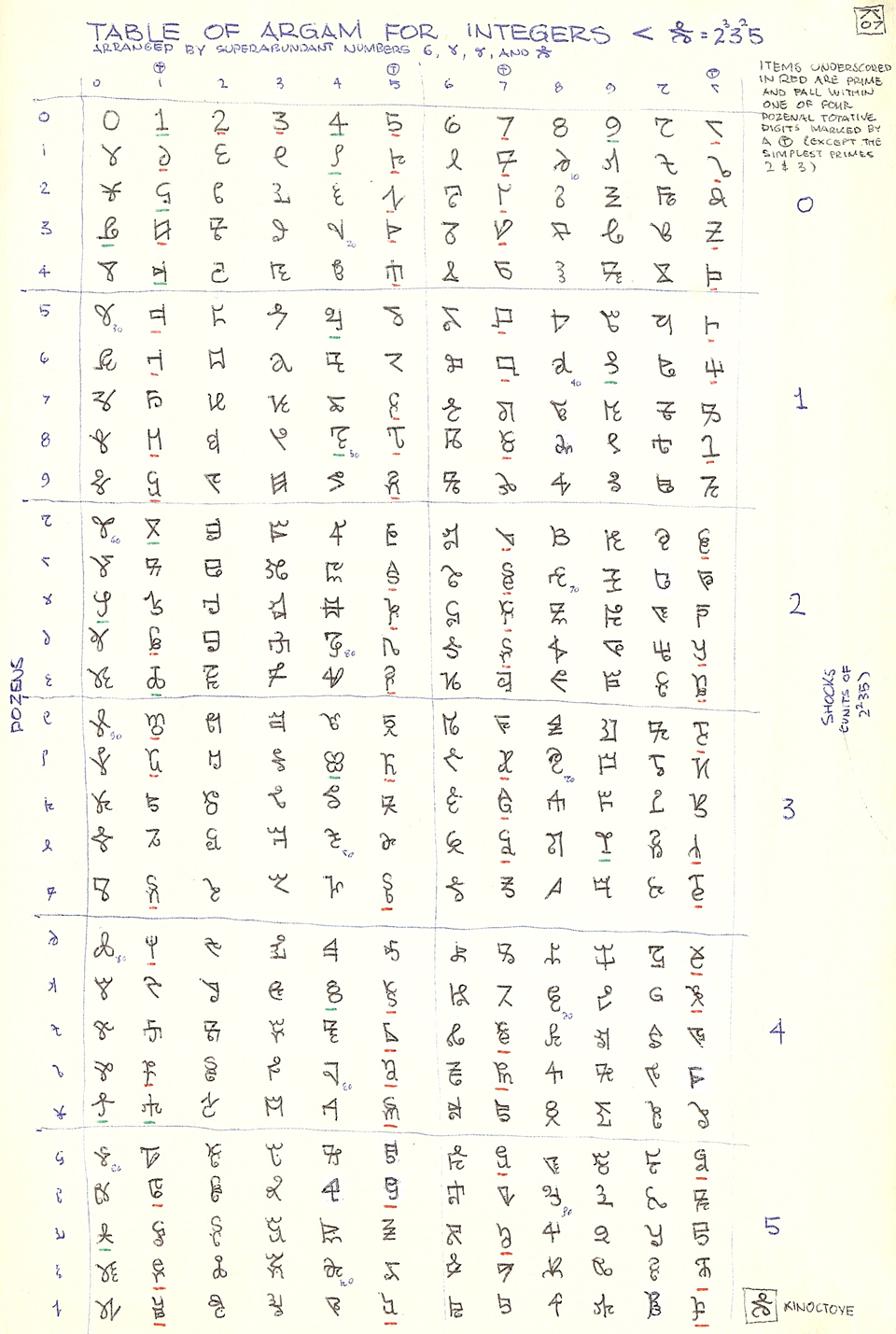 |
Argam KinoctoveA Set of Numerals for Large Number Bases |
Argam-360

Update:
See this page for vector linework toward a monospace font in the style of Courier that currently has 480 numerals. See argam-now for vector linework representing the serifed typeface called Vinci Firenze Argam that has 120 numerals. (see the set as it was in 1986 and 1992).
This is a set of numerals designed to represent each integer 0 ≤ n ≤ 360 with a single glyph. The argam (from Arabic, meaning “numbers”, the singular being ragam) began as the Argam-Arimaxa in 1983 and expanded in phases to over 400 numerals by late 2007. This is the back cover of the Rukami Argame (S7836), the Sketchbook of Numbers, developed between 2006 and 2008. Several numerals have evolved since this record was produced. Take a look at the first sixty argam, or see an argam calendar. View a sexagesimal multiplication table written in argam. The sketchbook work led to the development of proofs regarding neutral numbers and work published in the ACM Inroads magazine in 2012. The neutral numer work and the sketchbook led to the development of a "periodic table" of numbers called an arithmetic map. Later, Wolfram code was developed that now generates much of the work algorithmically. The Mathematica work now largely feeds the Online Encyclopedia of Integer Sequences (OEIS), see this page on my contributions.
The first argam extended to digit-12, and were the first two letters of a constructed alphabet produced at age 13. Initially digit-10 resembled a number “11” and was changed to a “2” rotated 180 degrees soon after. The argam were extended to cover hexadecimal in 1984, hence the digits 13-15 resemble the letters d through f using modified decimal numerals. Originally digit-12 looked like a "C", but was changed to a modified gamma. The next extension brought the argam to vigesimal in 1987, then to base thirty in 1989, with diacriticals applied to the numerals to extend them to cover sexagesimal. Sexagesimal had served as a kind of “holy grail” around 1990; in 1991 the argam were extended to base 60. A base converter for the HP48S calculator was programmed that would display numbers bases 2 ≤ r ≤ 60 using argam in graphic mode. In 1993, the system took on the name “al-Argam ar-Rimaxa” and was extended to one hundred digits. The system was again extended in 2005 to 120 digits shortly after encountering the DSGB. The most recent extension covers the contiguous set of integers 0 ≤ n ≤ 400, and certain integers that are prime powers or highly divisible numbers much larger than 400. Today, the name of the system is simply “argam”. Argam kinoctove specifies that the set is trimmed to digit-359, in order to represent base-360, called “kinoctove” (5 · 8 · 9) in argam nomenclature.
There is a need for transdecimal numerals that have the look and feel of numbers rather than repurposed characters. We need purpose-built numbers!
This page last modified Tuesday 1 June 2021.